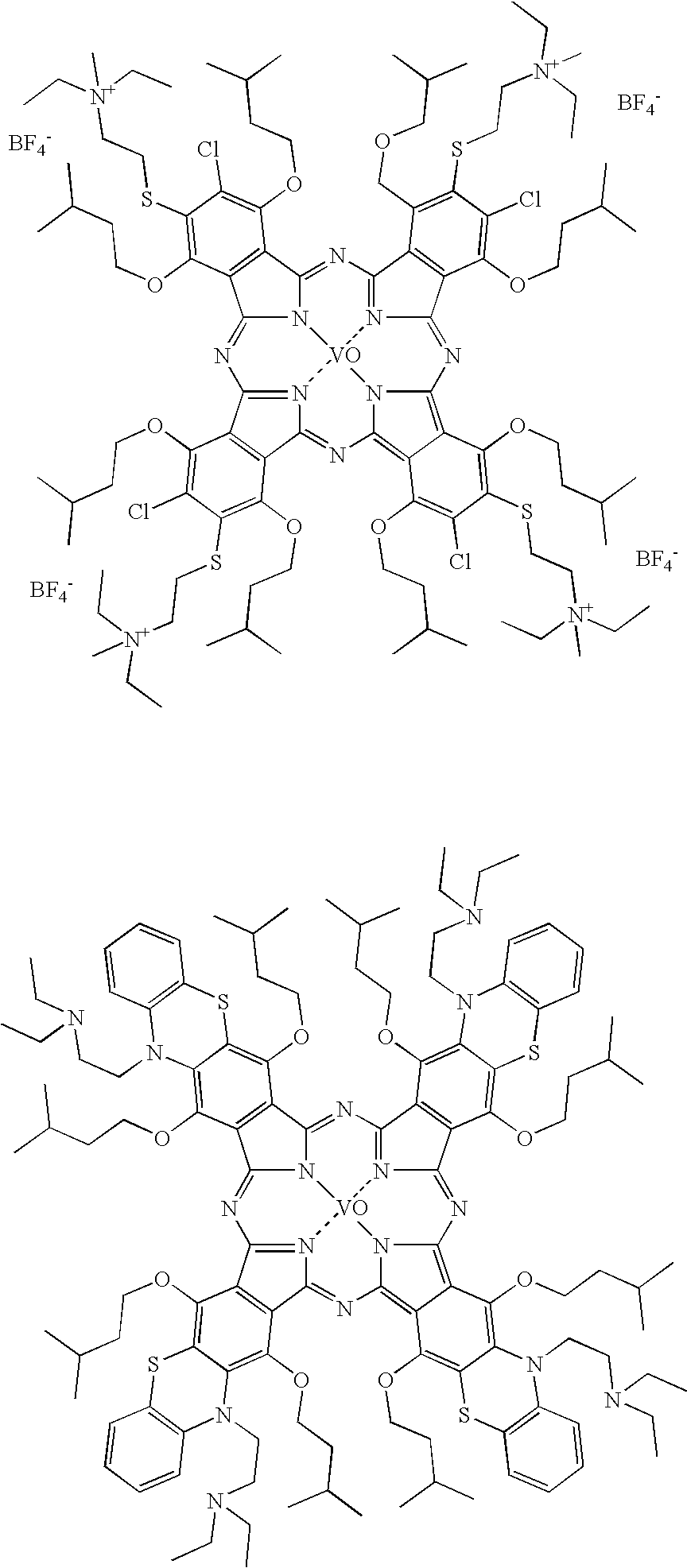Resin composition for laser engraving, resin printing plate precursor for laser engraving, relief printing plate and method for production of relief printing plate
a laser engraving and resin composition technology, applied in foil printing, inks, transportation and packaging, etc., can solve the problems of inability to produce original films in time and cost, inability to meet the requirements of printing pressure, and disadvantages of analog plate making in view of environmental health, so as to achieve high engraving sensitivity and reduce the time necessary for the formation of reliefs , the effect of reducing the time required for engraving
- Summary
- Abstract
- Description
- Claims
- Application Information
AI Technical Summary
Benefits of technology
Problems solved by technology
Method used
Image
Examples
example 1
[0211]In a three-necked flask equipped with a stirring blade and a condenser were put 54 parts by weight of Gosenol EG-30 (PVA derivative having a saponification degree as shown in Table 1, produced by Nippon Synthetic Chemical Industry Co., Ltd.) as the hydrophilic polymer (A), 1 part by weight of IR-1 (D99-009, a phthalocyanine compound, produced by Yamamoto Chemicals Inc.) as the light-to-heat conversion agent (B), 20 parts by weight of diethylene glycol as the plasticizer (E) and 35 parts by weight of water and 12 parts by weight of ethanol as the solvents and the mixture was heated at 70° C. for 120 seconds with stirring to dissolve the polymer. To the solution were further added 10 parts by weight of DPHA (dipentaerythritol hexaacrylate, produced by Toagosei Co., Ltd.) which was an ethylenically unsaturated monomer and 15 parts by weight of Blenmer PE-200 (methacrylate of polyethylene glycol having an average molecular weight of 200, produced by NOF Corp.) as the polymerizable...
examples 2 to 10
[0224]The same procedures were performed as in Example 1 except for using IR-2 to IR-10 in place of IR-1 as the light-to-heat conversion agents (B) in the same amount, respectively.
example 11
[0225]The same procedure was performed as in Example 1 except for changing 25 parts by weight of the total of two kinds of the polymerizable compounds (D) to 25 parts by weight of the compound shown below.
PUM
| Property | Measurement | Unit |
|---|---|---|
| absorption maximum wavelength | aaaaa | aaaaa |
| thickness | aaaaa | aaaaa |
| thickness | aaaaa | aaaaa |
Abstract
Description
Claims
Application Information
 Login to View More
Login to View More - R&D
- Intellectual Property
- Life Sciences
- Materials
- Tech Scout
- Unparalleled Data Quality
- Higher Quality Content
- 60% Fewer Hallucinations
Browse by: Latest US Patents, China's latest patents, Technical Efficacy Thesaurus, Application Domain, Technology Topic, Popular Technical Reports.
© 2025 PatSnap. All rights reserved.Legal|Privacy policy|Modern Slavery Act Transparency Statement|Sitemap|About US| Contact US: help@patsnap.com



